Photos from the field: zooming in on Australia’s hidden world of exquisite mites, snails and beetles

Environmental scientists see flora, fauna and phenomena the rest of us rarely do. In this series, we’ve invited them to share their unique photos from the field.
Which animals are quintessentially Australian? Koalas and kangaroos, emus, tiger snakes and green tree frogs, echidnas and eastern rosellas, perhaps. And let’s not forget common wombats.
Inevitably, most lists will be biased to the more conspicuous mammals and birds, hold fewer reptiles and frogs, and likely lack invertebrates — animals without a backbone or bony skeleton — altogether.
I’m an invertophile, fascinated by our rich terrestrial invertebrate fauna, so my list will be different. I’m enchanted by stunning dragon springtails, by cryptic little Tasmanitachoides beetles, and by the poorly known allothyrid mites, among thousands of others.
Australia’s terrestrial invertebrate multitude contains several hundred thousand uniquely Australian organisms. Most remain poorly known.
To preserve our biodiversity, we first must ask: “which species live where?”. For our invertebrates, we are a long way from knowing even this.
The Black Summer toll
Last year, a team of scientists estimated that the Australian 2019-2020 bushfires killed, injured or displaced three billion animals. That was a lot. But it was also a woefully inadequate estimate, because it only accounted for mammals, reptiles, birds and frogs.
Hidden from view, many trillions more invertebrates burned or were displaced by the fires. And yes, invertebrates are animals too.
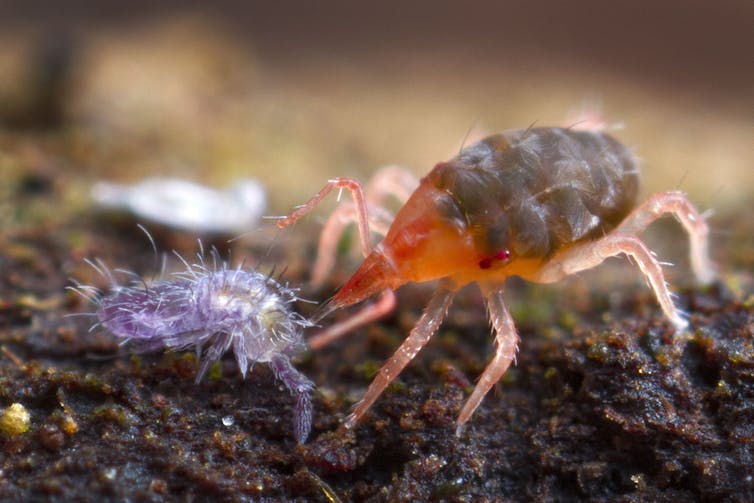
Admittedly, it’s hard to come to terms with invertebrates because they’re often hard to find and difficult to identify. Most species are inconspicuous, even if they belong to incredibly abundant groups, such as mites and springtails, which can occur in numbers exceeding 10,000 per square metre.
Most invertebrates are poorly known because there are so many species and so few people working on them. In fact, it’s likely only a quarter to one-third of Australia’s terrestrial invertebrate fauna is formally described (have a recognised scientific name).
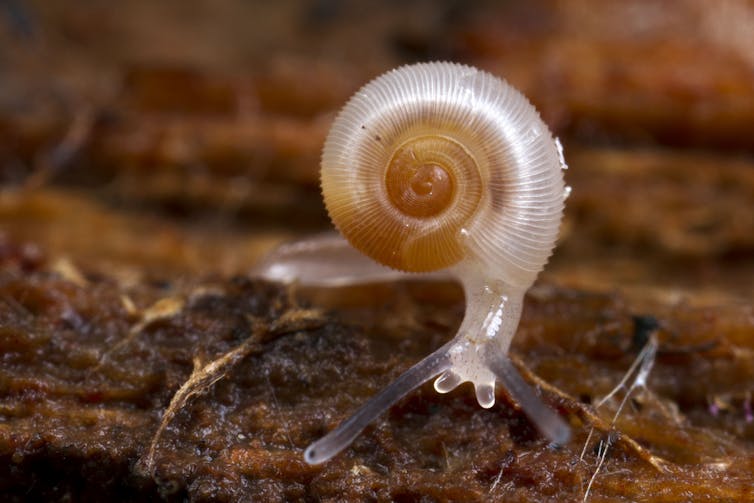
One of the problems invertebrates have, in terms of attracting attention, is that many are not easily seen with the naked eye.
Macrophotography can magnify these wonders for a view into a world most of us are completely unfamiliar with. Even then, it often will be hard to know what we see. Everyone will recognise a kangaroo, but who can identify an allothyrid mite?
The photo below shows an undescribed species of mite from the family Allothyridae, from Mount Donna Buang in Victoria. The mite family Allothyridae has three described Australian species, and dozens more awaiting description.
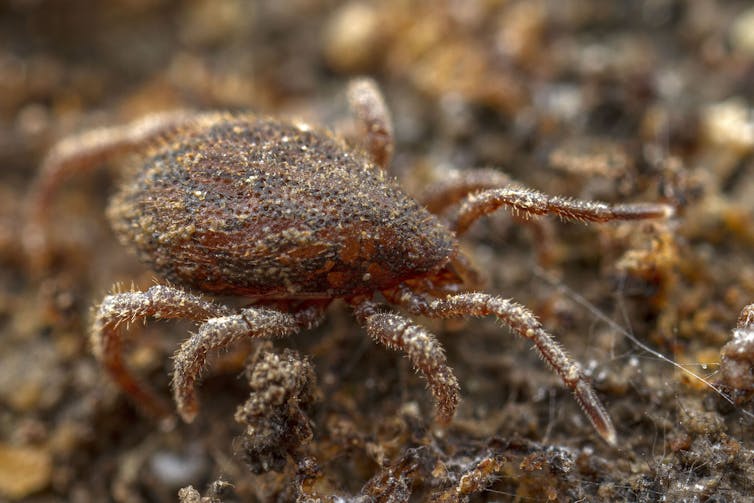
This collage shows a selection of mites found in the forests of southeastern Australia. It’s likely many of the species shown here are unknown to science.
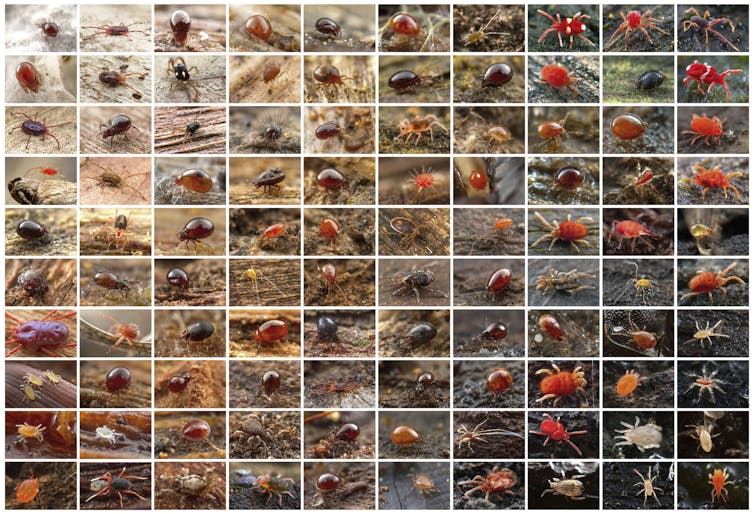
A deeply ancient lineage
Animal ecologists, most of whom work on vertebrates, often joke that I “study the ‘food’, haha…”. They think they’re funny, but this reflects a deep seated bias — one extending from scientists to the wider public. This limits the development of a comprehensive understanding of biodiversity that has flow-on effects for conservation more broadly.
It’s true: invertebrates are food for larger animals. But their vital role in maintaining Australia’s ecosystems doesn’t end there.
Every species has an evolutionary history, a particular habitat, a set of behaviours reflecting that history, and a role to play in the ecosystem. And many terrestrial invertebrates belong to especially ancient lineages that record the deep history of Australia’s past.
The moss bug family Peloridiidae, for example, dates back more than 150 million years. For context, the kangaroo family (Macropodidae) is likely 15-25 million years old.
Their history is reflected in the breakup of the ancient supercontinent, Gondwana. In fact, Australian species of moss bugs are more closely related to South American species than to those from nearby New Zealand.
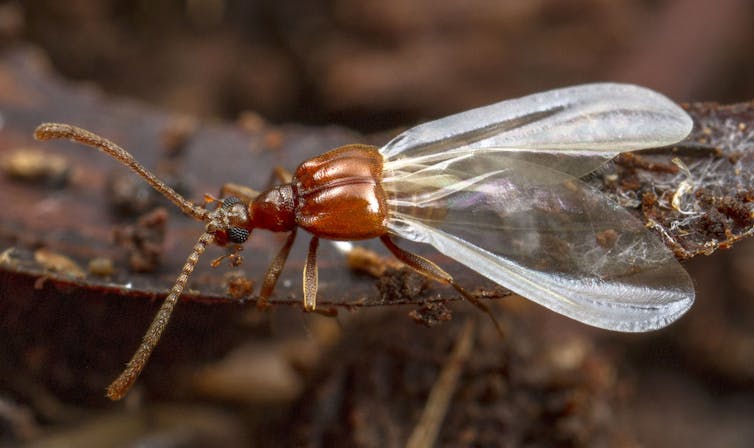
This is a common pattern in terrestrial invertebrate groups. It reflects how the New Zealand plate separated from the remainder of Gondwana about 80 million years ago, while the Australian plate remained connected to South America via Antarctica.
Similar stories can be told from across the invertebrate spectrum. The photo below shows a few examples of these relics from Gondwana.
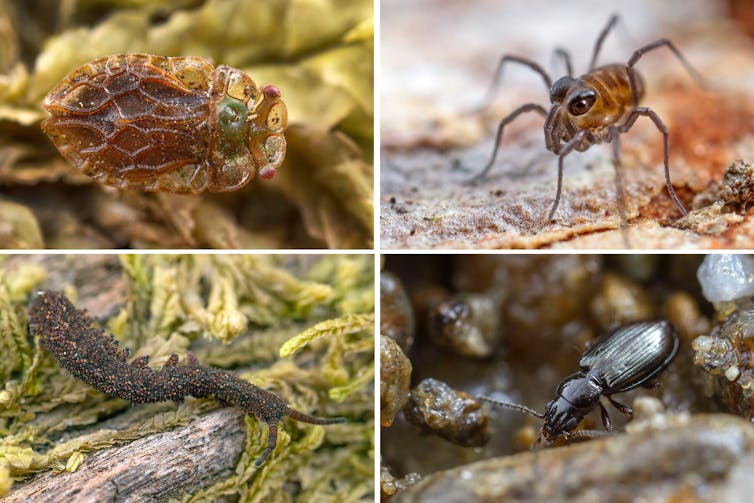
Their fascinating evolution
Overprinting this deep history are the changes that occurred in Australia, especially the drying of the continent since the middle Miocene, about 12-16 million years ago.
This continent-wide drying fragmented wet forests that covered much of the continent, resulting in the restriction of many invertebrate groups to pockets of wetter habitat, especially along the Great Dividing Range and in southwestern Australia.
Read more: Trapdoor spider species that stay local put themselves at risk
A consequence of this was the evolution in isolation of many “short-range endemic” species.
A short-range endemic species means their geographic distribution is less than 10,000 square kilometres. A short-range endemic mammal you might be familiar with is Leadbeater’s possum, restricted to the wet forests of the Victorian Central Highlands.
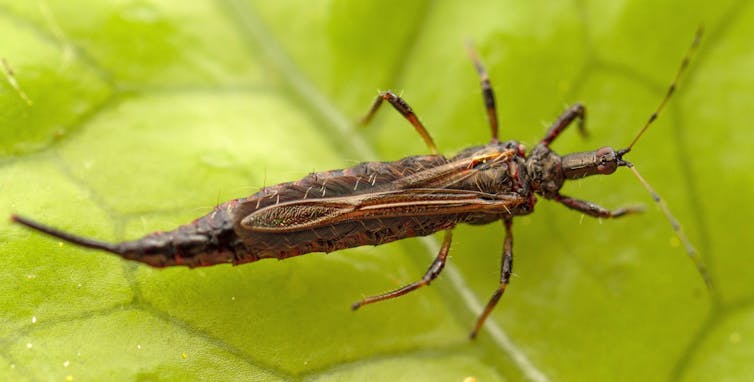
But short-range endemism is much more common in invertebrates than other organisms. This is because many invertebrates are poor dispersers: they don’t move between habitat patches easily. They may also maintain viable populations in small areas of suitable habitat, and are frequently adapted to very specific habitats.
Take Tropidotrechus, pictured below, a genus of beetles mostly restricted to the same region as Leadbeater’s possum. They, however, divide the landscape at a much finer scale because they’re restricted to deep leaf litter in cool, wet, forest gullies.
As Australia dried, populations of Tropidotrechus became isolated in small patches of upland habitat, evolving into at least seven species across the ranges to the east of Melbourne.
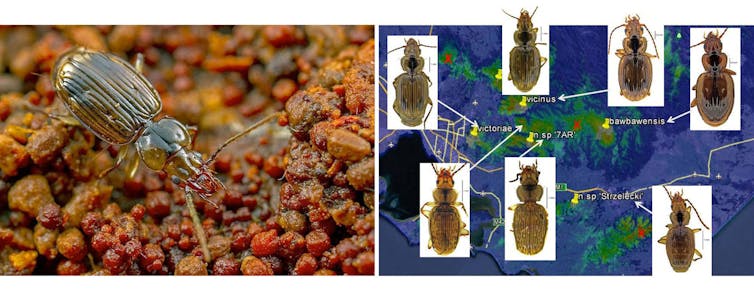
Discoveries waiting to happen
The trouble with knowing so little about Australia’s extraordinary number of tiny, often locally unique invertebrates, is that we then massively underestimate how many of them are under threat, or have been badly hit by events like the 2019-2020 fires.
If we wish to conserve biodiversity widely, rather than only the larger charismatic wildlife, then enhancing our knowledge of our short-range species should be a high priority.
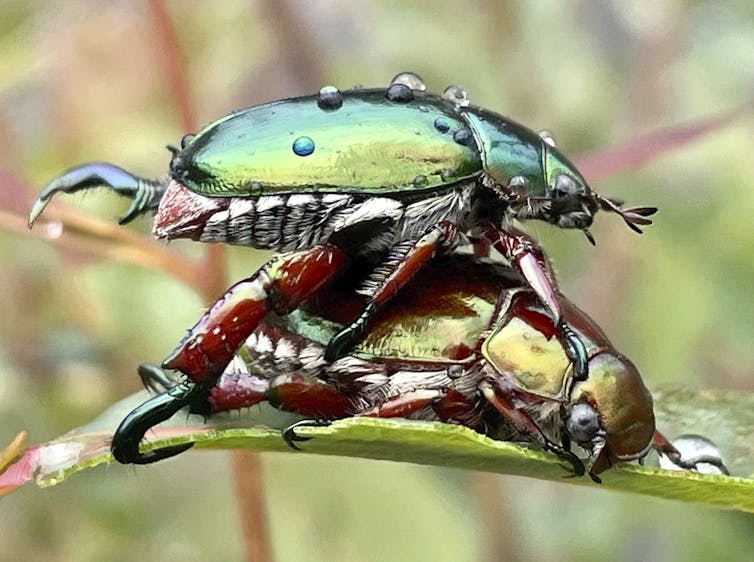
We’ve only just scratched the surface of Australia’s wonderful invertebrate fauna, so there are enough discoveries for everyone.
You can join iNaturalist, a citizen science initiative that lets you upload images and identify your discoveries. Perhaps you’ll discover something new — and a scientist just might name it after you.
Read more: Want to teach kids about nature? Insects can help
Nick Porch, Senior Lecturer in Environmental Earth Science, Deakin University
This article is republished from The Conversation under a Creative Commons license. Read the original article.




